
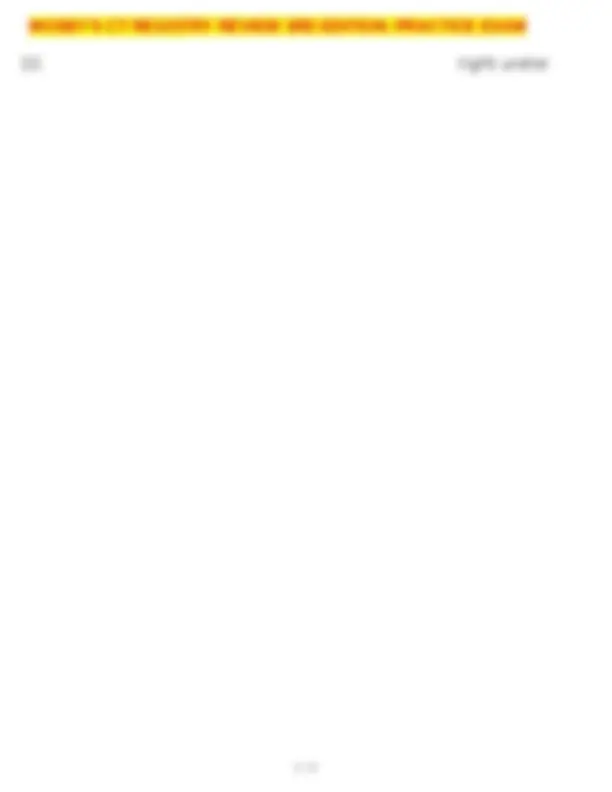
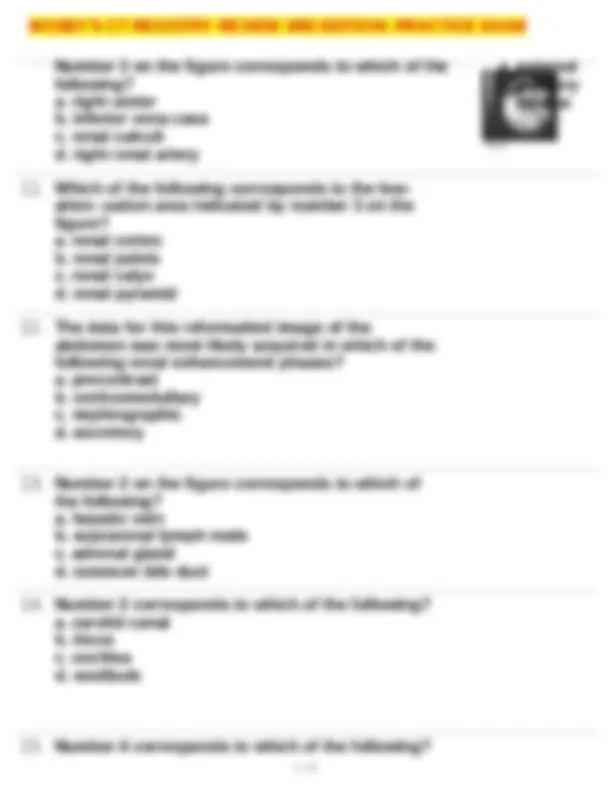
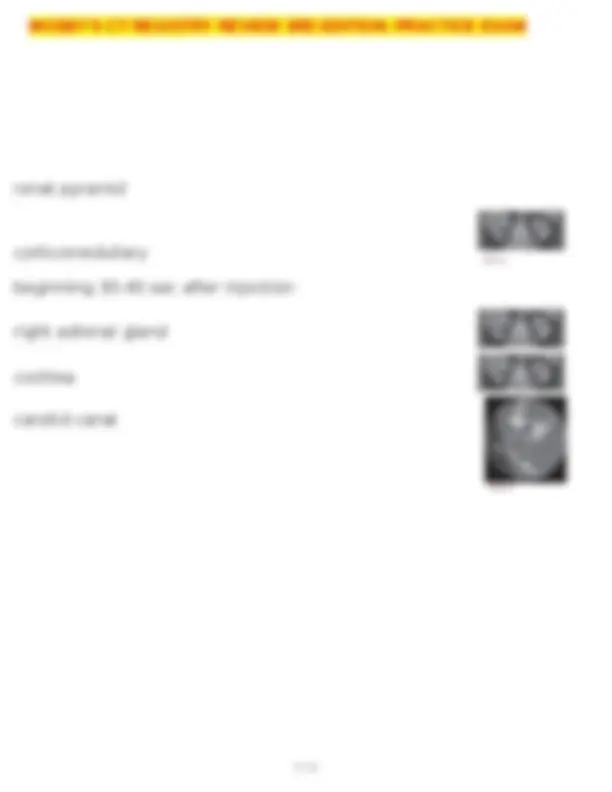
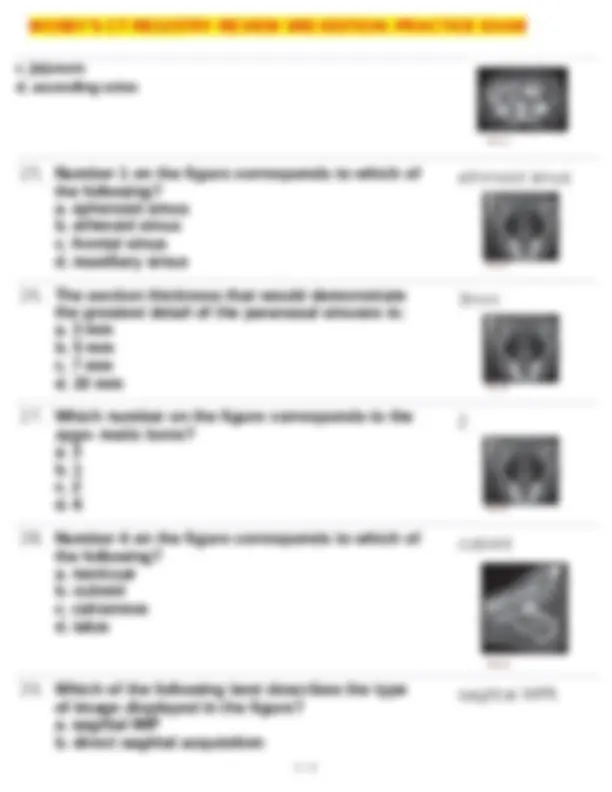
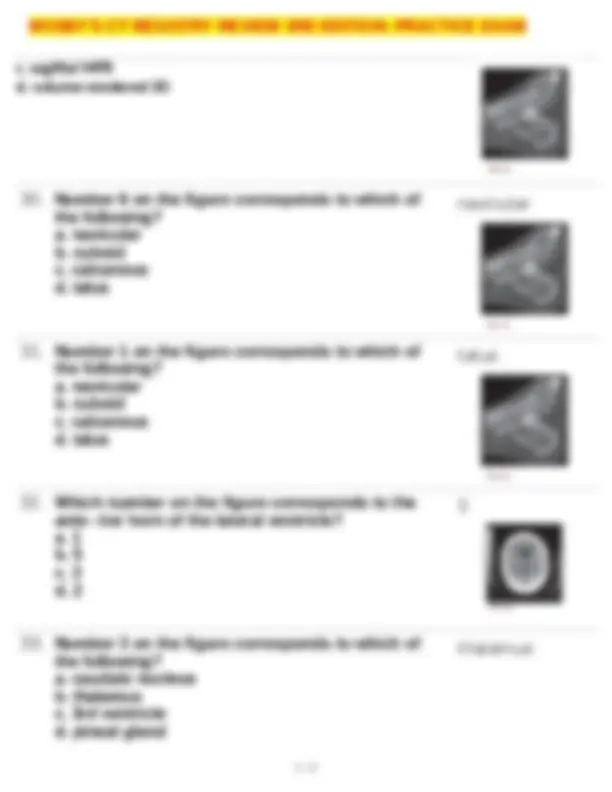
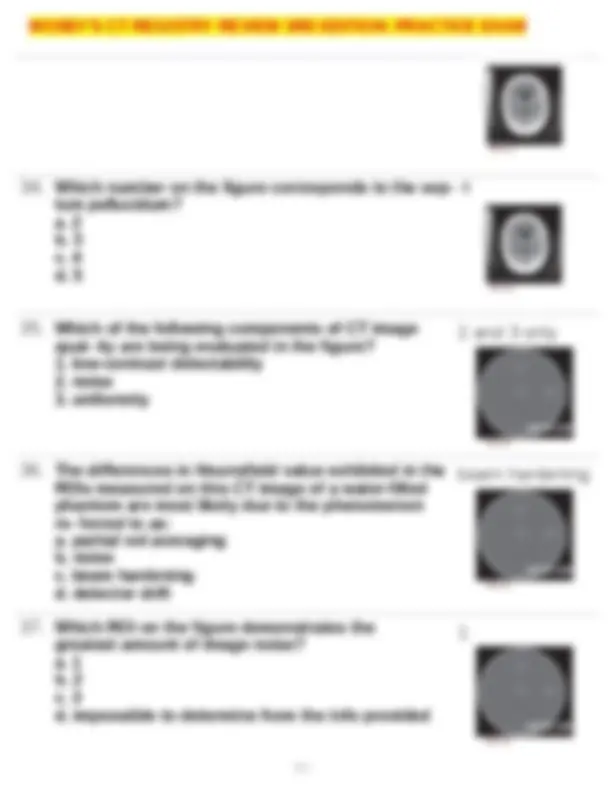
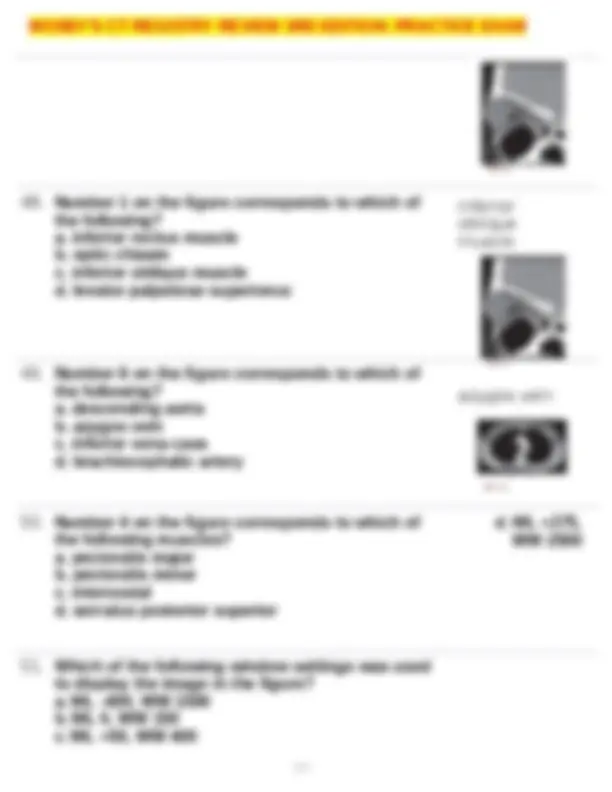
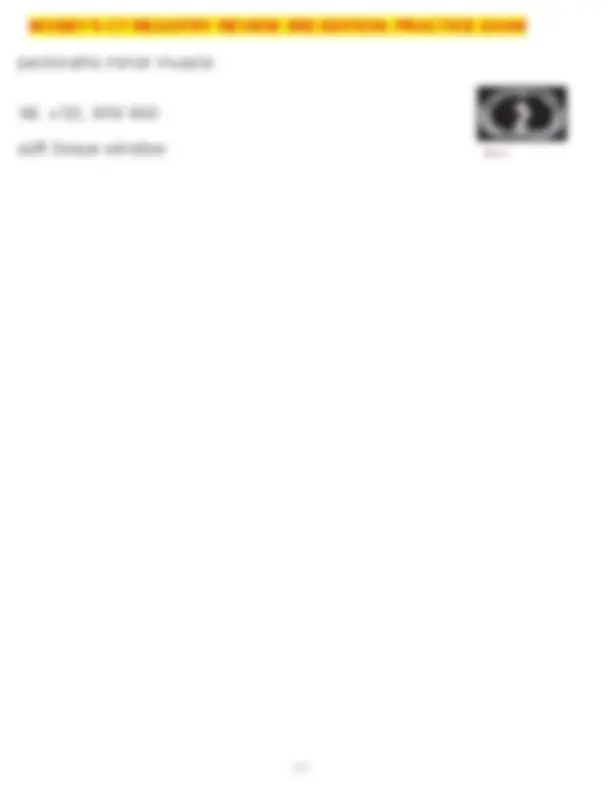
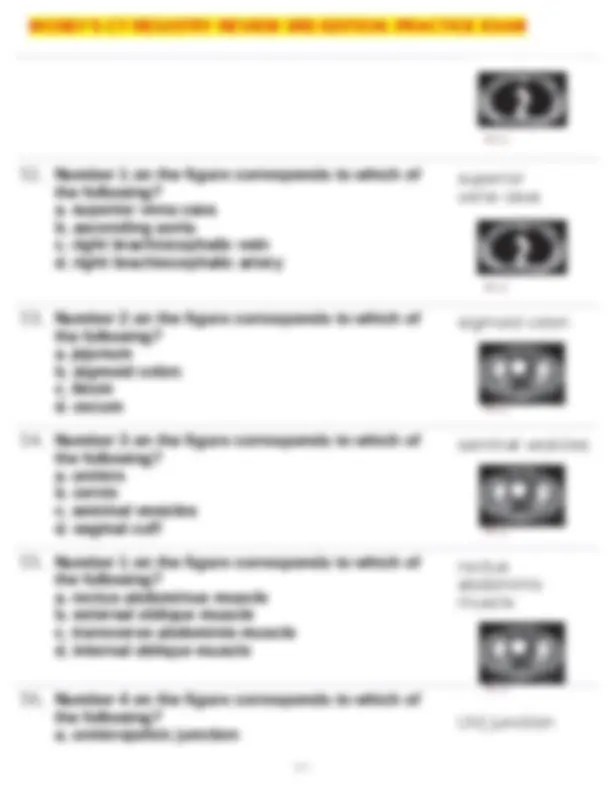
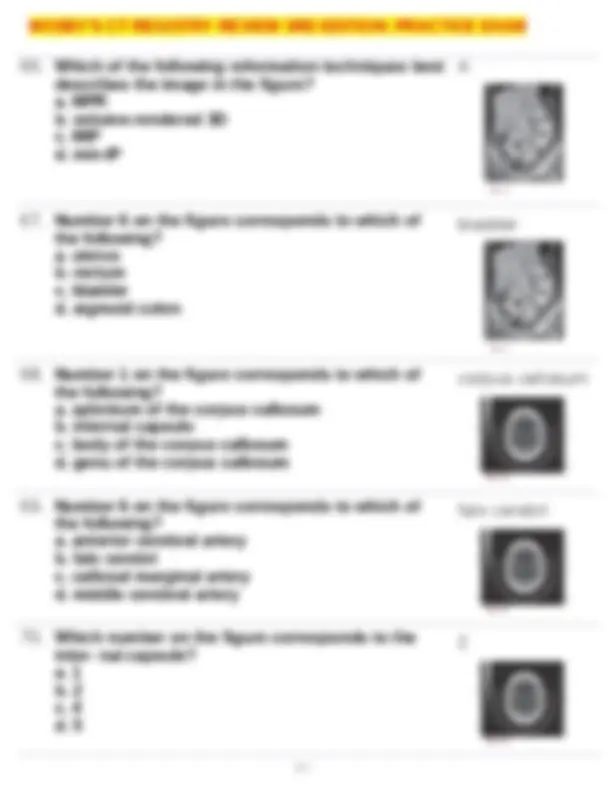
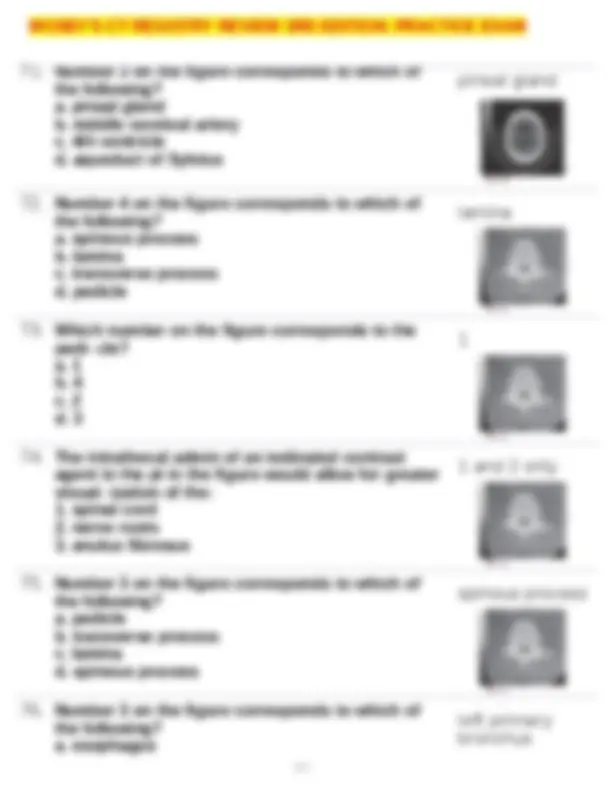
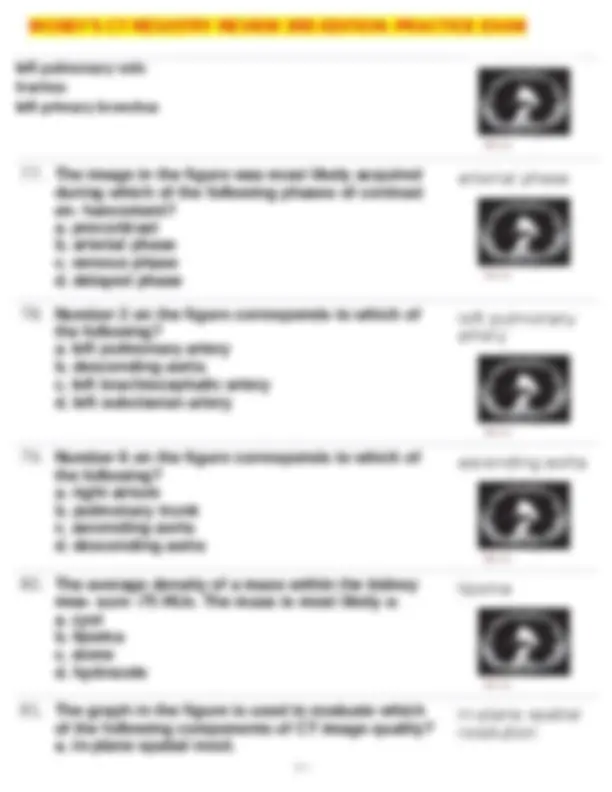
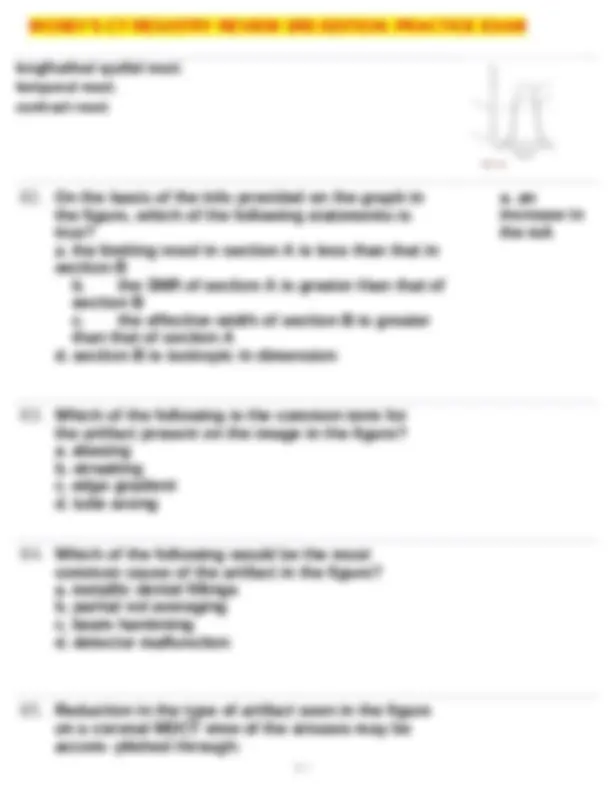
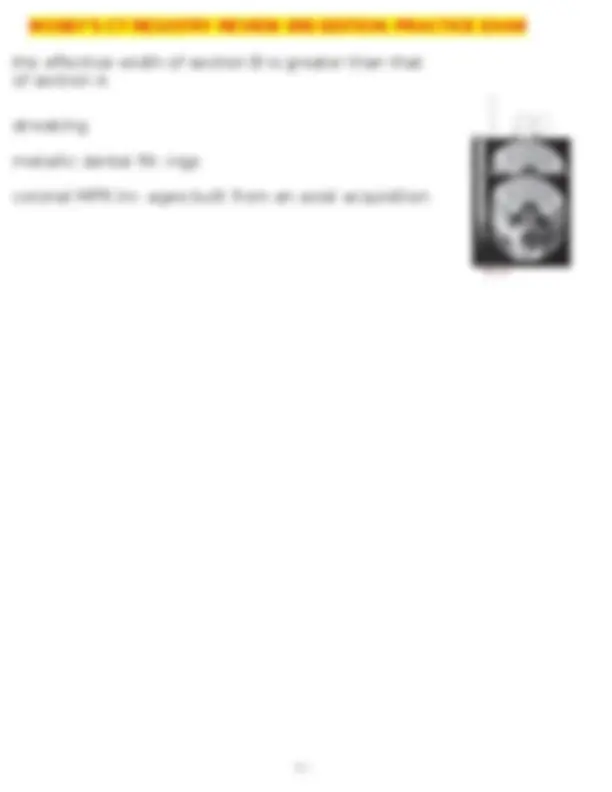
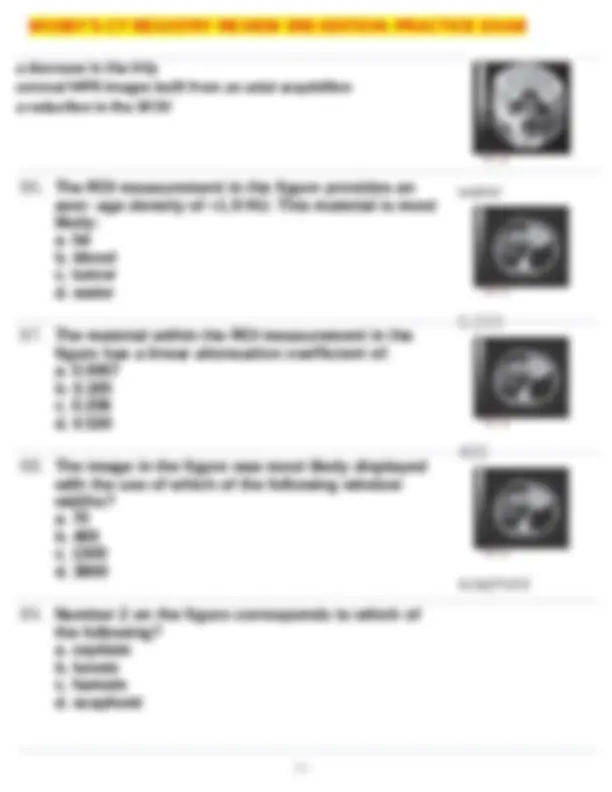
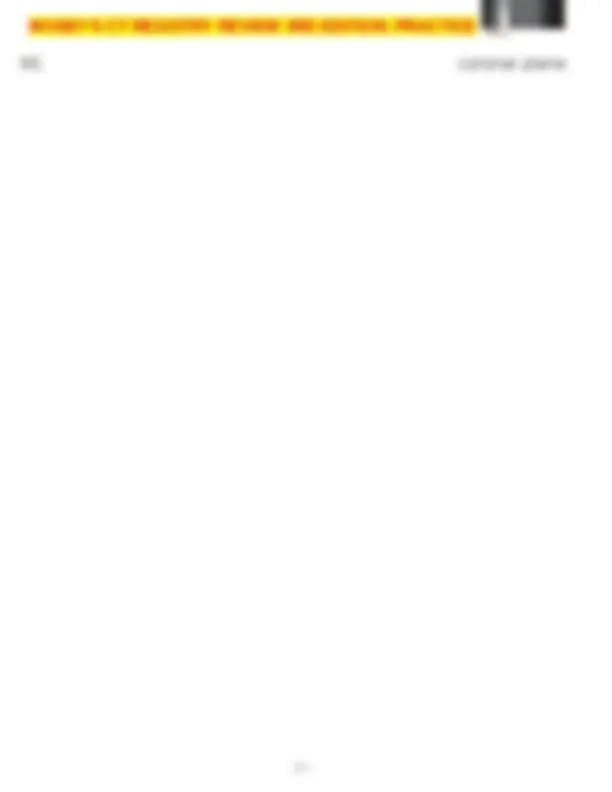
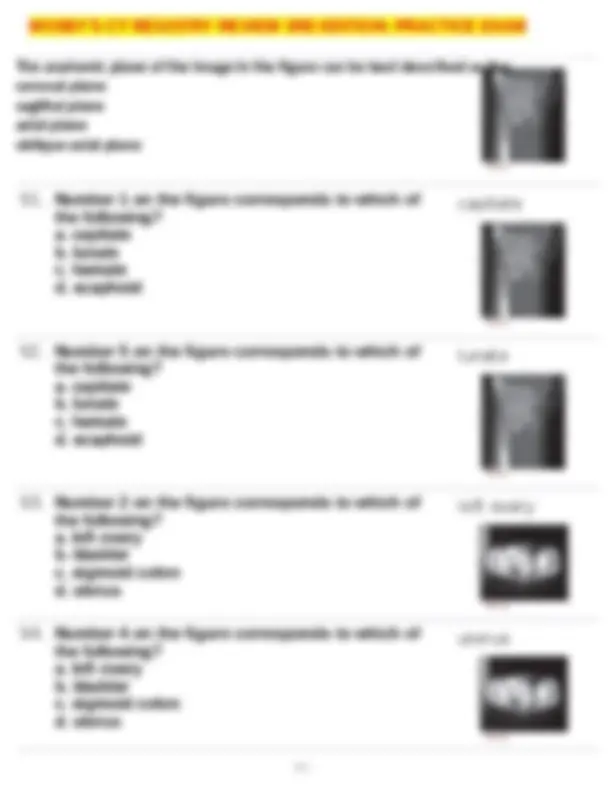
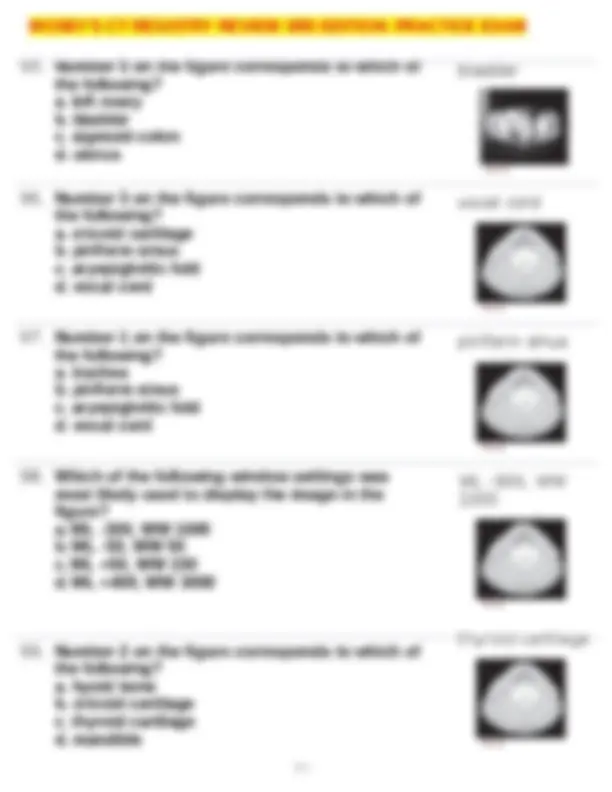
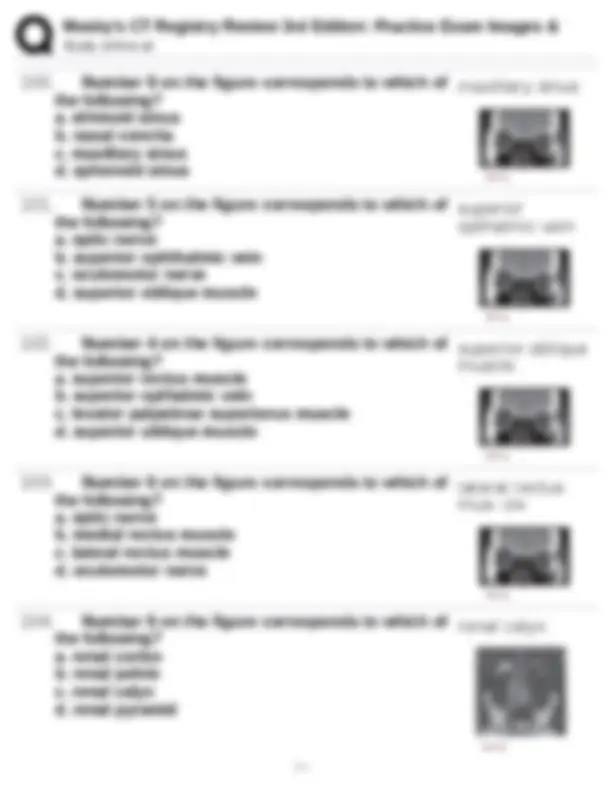
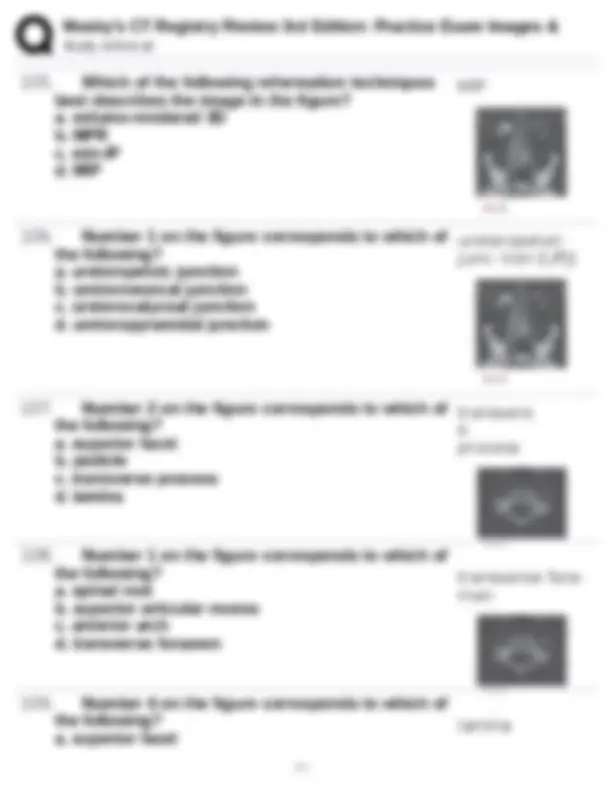
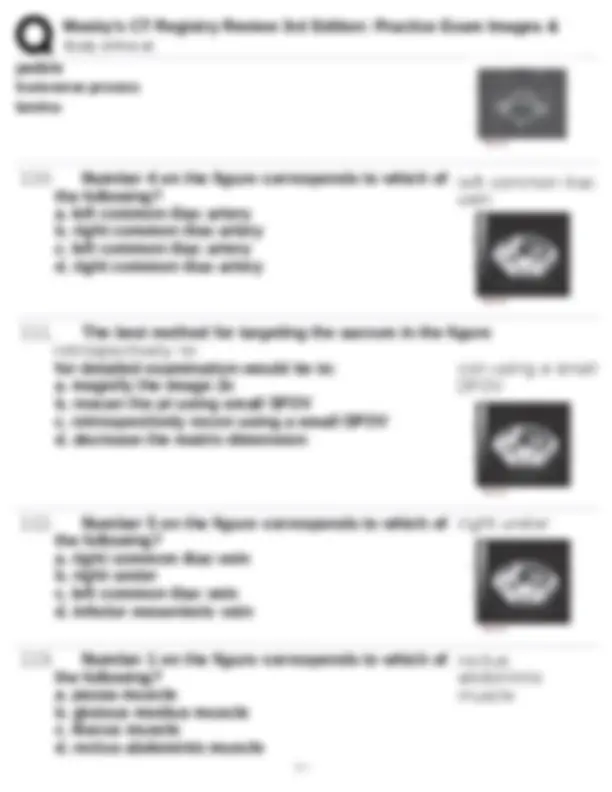
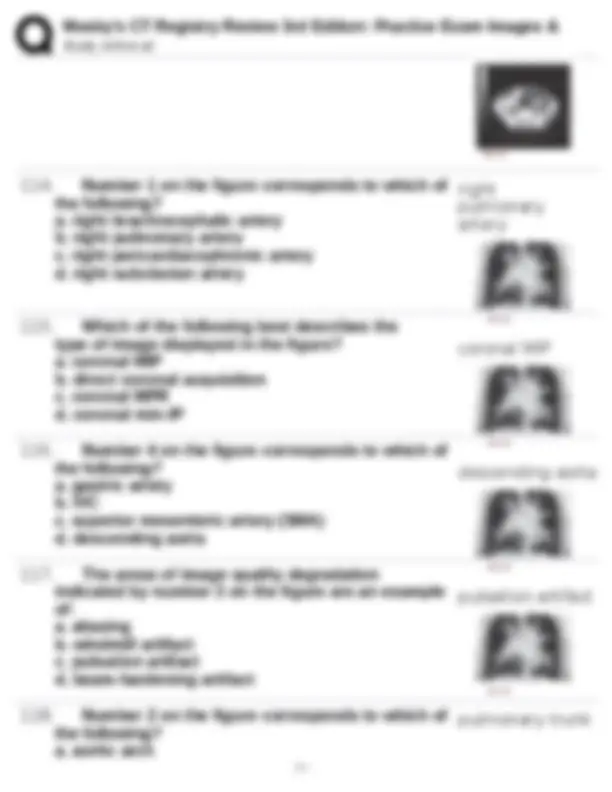
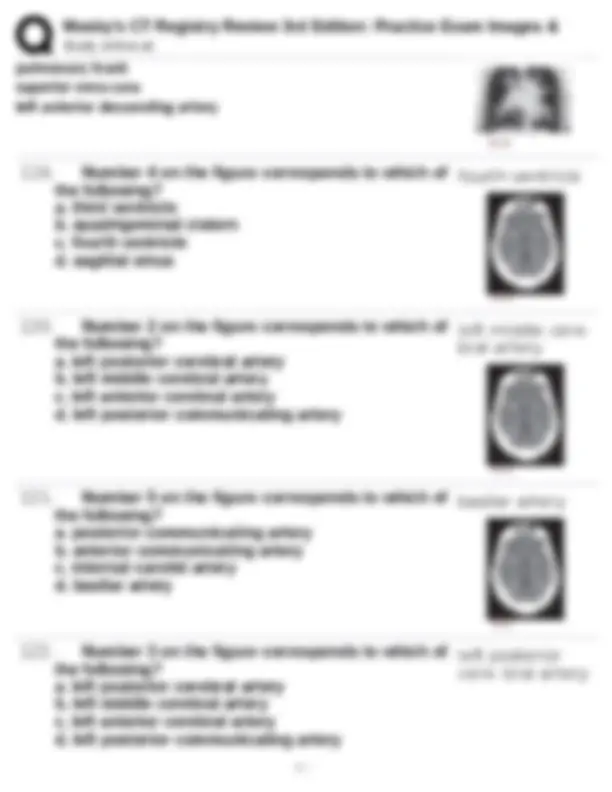
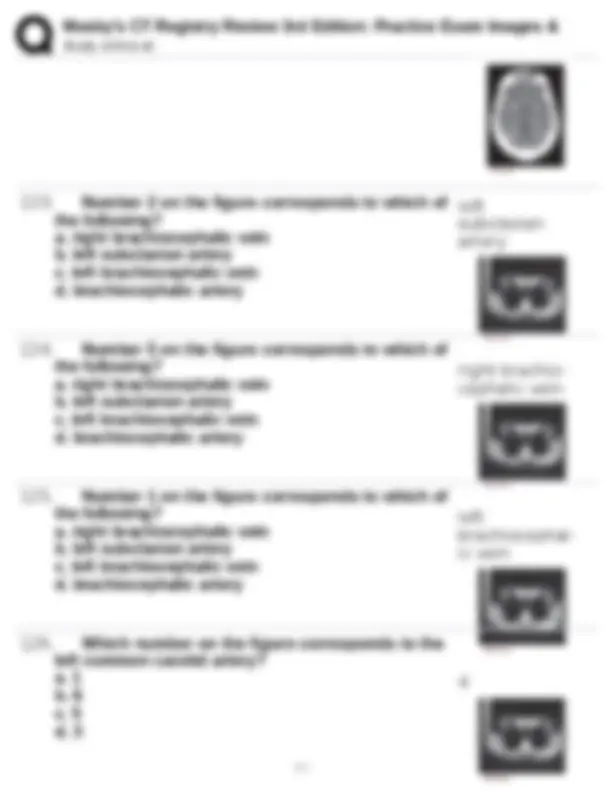
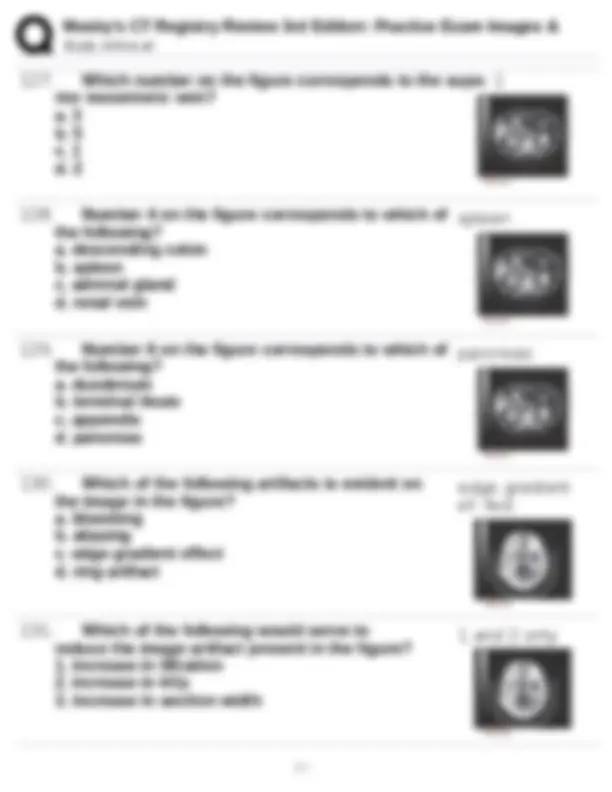
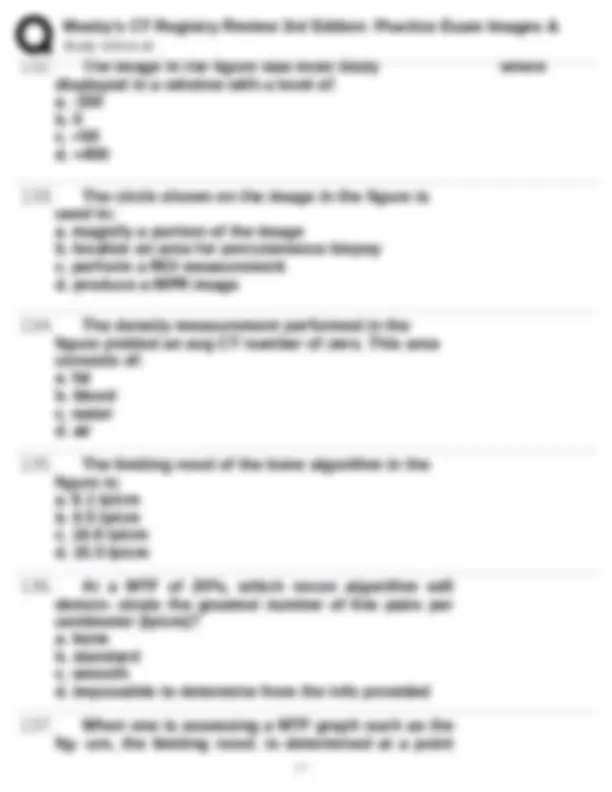
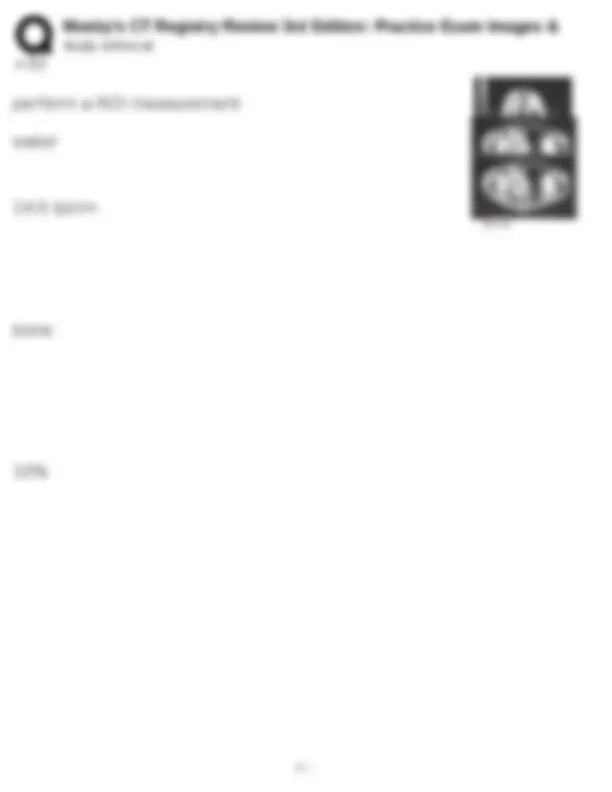
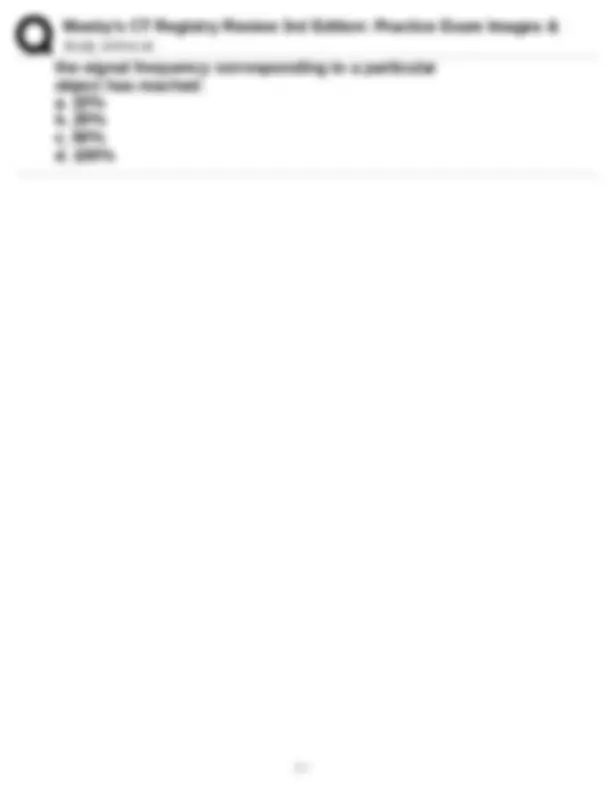


Study with the several resources on Docsity

Earn points by helping other students or get them with a premium plan


Prepare for your exams
Study with the several resources on Docsity

Earn points to download
Earn points by helping other students or get them with a premium plan
Community
Ask the community for help and clear up your study doubts
Discover the best universities in your country according to Docsity users
Free resources
Download our free guides on studying techniques, anxiety management strategies, and thesis advice from Docsity tutors
MOSBY'S CT REGISTRY REVIEW 3RD EDITION: PRACTICE EXAM IMAGES
Typology: Exams
1 / 36

This page cannot be seen from the preview
Don't miss anything!





























1 / 36
2 / 36
4 / 36 Number 3 on the figure corresponds to which of the following? a. right ureter b. inferior vena cava c. renal calculi d. right renal artery
5 / 36 renal pyramid corticomedullary beginning 30-40 sec after injection right adrenal gland cochlea carotid canal
7 / 36
8 / 36
10 / 36
11 / 36
13 / 36
14 / 36 pectorallis minor muscle WL +50, WW 400 soft tissue window
16 / 36
17 / 36
19 / 36
20 / 36